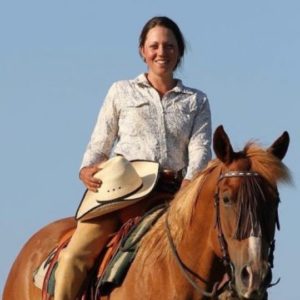 Editor’s Note: Amy Skinner is a regular guest columnist and has been a horse gal since age six. She will present an arena demonstration with fellow trainer and rider, Katrin Silva, at the Best Horse Practices Summit.
Editor’s Note: Amy Skinner is a regular guest columnist and has been a horse gal since age six. She will present an arena demonstration with fellow trainer and rider, Katrin Silva, at the Best Horse Practices Summit.
She rides and teaches dressage and Western. Skinner has studied at the Royal Andalusian School of Equestrian Art in Spain, with Buck Brannaman, Leslie Desmond, Brent Graef, and many others.
Amy Skinner writes:
Every clinician I’ve ridden with and every teacher I’ve taken lessons from touts the mantra: It takes the time it takes.
Then why are our time constraints and demands still the horse’s biggest enemies?
Years ago, it was generally accepted that training horses was a time-consuming event. Ray Hunt said, “As time goes on, all the little things will fall into line. We should be adjusting to fit the horse…You can’t make it happen and you can’t put a time limit on it…Sometimes the slower you go, the faster you learn.”
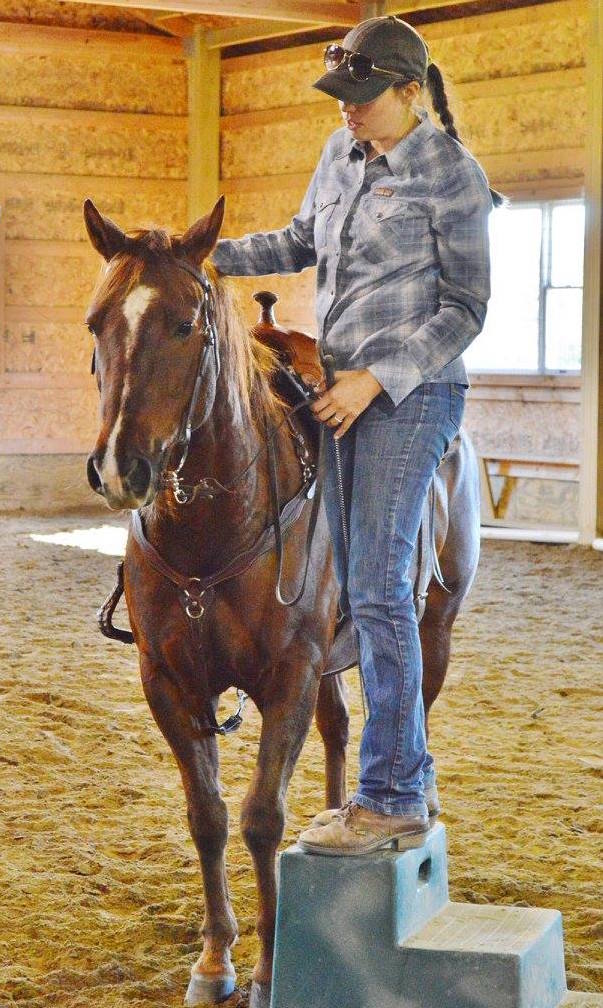 Now, too often there is a cheap, fast-food mentality to training horses. Trainers say essentially, you bring me a horse and I’ll produce a product, rather than I’ll take time to develop an athlete.
Now, too often there is a cheap, fast-food mentality to training horses. Trainers say essentially, you bring me a horse and I’ll produce a product, rather than I’ll take time to develop an athlete.
Horsemanship should be fine cuisine, the kind that takes time to create before it’s served.
As a rider and trainer, I’m often presented with the dilemma of a client wanting a horse started or fixed (sometimes both) in 30 days. It’s a common time frame for such a thing, but I wonder if it’s really fair to the horse or the person to put a time limit on such an important and delicate event as the beginning or restart of a horse’s riding life?
Years ago I had a filly. I handled her gently from the day she was born. She never had any formal training until she was two, I just handled her routinely in a way that worked for both of us as needed. She was never scared and everything seemed to flow smoothly.
At two, I saddled her for the first time. It was uneventful because she was used to all kinds of feelings on her body and around her.
At three, I rode her a time or two, which was also uneventful because she knew me, trusted me, and wasn’t afraid.
At four, I began riding her seriously and it was as if I had stepped onto an already-broke horse. Of course, she wasn’t educated yet. But she was willing and relaxed. By her second ride, we were down the trail and moving cows.
This filly’s education was quite relaxed compared to the 30-day colt starts I’ve been asked to do.
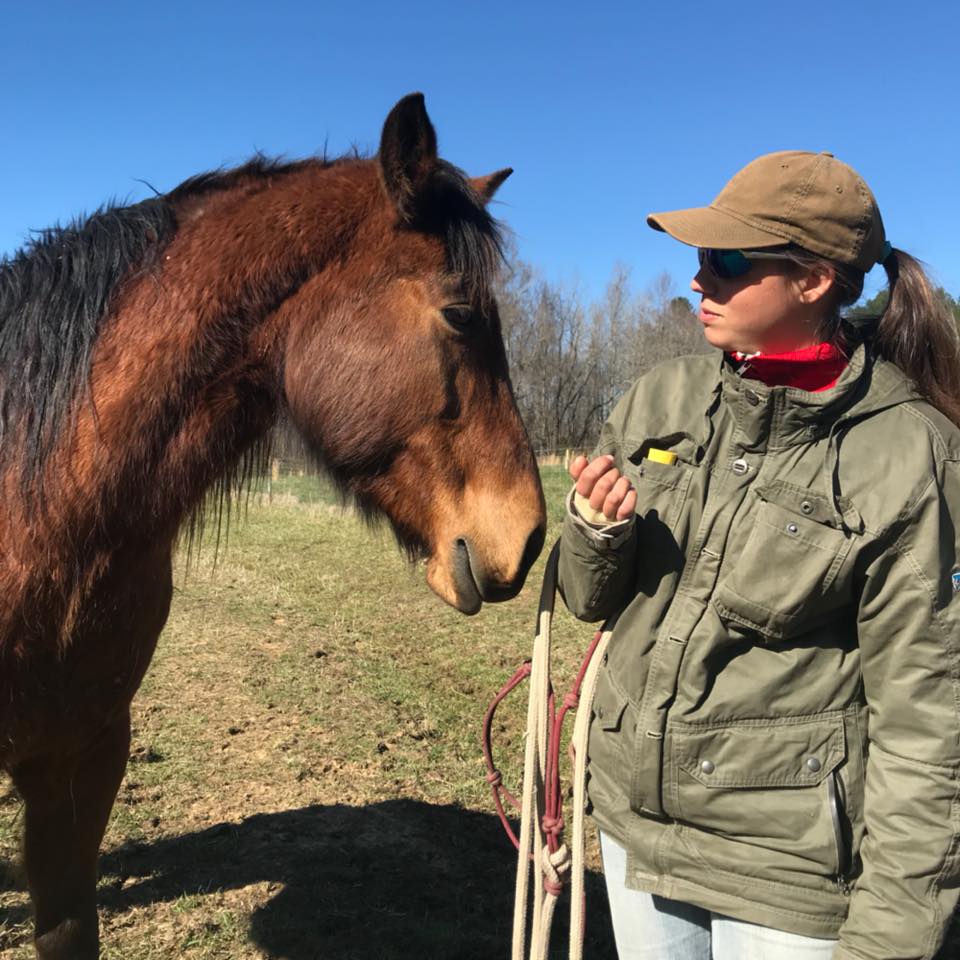
Paradoxically, taking your time often allows the process to speed up
Taking your time in this way increases their ability to relax, learn, and retain information.
After a year off, I returned my attention to the filly and she was not too far behind where I’d left her. Often horses that are pushed through a fast fix end up exploding for “no apparent reason” or suddenly backsliding dramatically. Some of the horses I’ve seen go through training programs could one day be ridden, but the next barely touched.
Dr. Steve Peters and Maddy Butcher talked about this in a piece on the neurological low road and high roads of horse work:
Danger is a normal part of life, but after trauma, the world is experienced with a different nervous system…Every encounter or event may be contaminated by the past.
In neuro-anatomy terms:
The amygdala is the brain’s smoke detector. It identifies whether or not incoming input is relevant to our survival. It does so quickly and automatically, with help of feedback from the hippocampus, a nearby structure that relates the new input to past experiences.
If the amygdala senses threat, it sends an immediate message to the hypothalamus and the autonomic nervous system to orchestrate a whole body response. It decides whether incoming information is a threat before we are consciously aware of the danger. By the time we realize what is happening, our body may already be on the move.
I can’t help what happened in the past, but I can encourage new habits by the way I routinely, patiently encourage them to not hit the low road, ie, by reacting with fear or aggression.
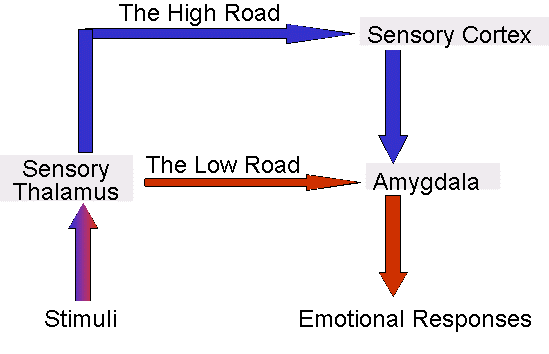
Courtesy of NY TImes
Dr. Peters added:
When you think a horse is calm, it may actually be checked out. Its nervous system may be set at hyper-alert.
Two of my horses were originally training horses brought to me with pretty big issues. They were anxious. While they made progress, it seemed they still held quite a bit of tension. Both were ultimately given to me because of the amount of time it’d take to turn them around.
The minute I dropped any imposed time constraint and started playing around, an amazing thing happened: they relaxed enough to learn.
They are both doing very well now, and I take things to them as I have time and as it works for them.
I’m not advocating that people send their horses to training indefinitely and spend all their money. But I think if horses and people both are going to be successful, change need to happen:
Riders need to pair themselves well with their horses.
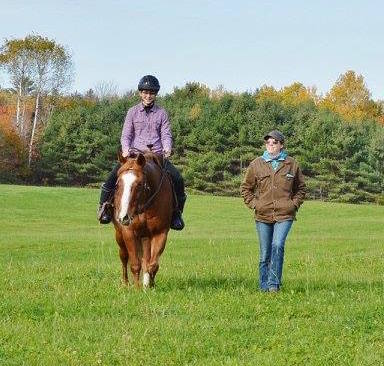
Are you and your horse a good fit?
Trainers need to be honest in their assessment of horse-rider pairs.
The six-year old reactive mustang for the nervous rider is not a good fit. Taking such a horse like that under any time frame is unfair to the horse and the rider if the rider’s ability and lifestyle doesn’t match the horse’s needs.
The horse’s personality and breeding should fit the rider’s needs. If you want a quiet horse to enjoy on the trail, and you pick a good fit, it will take less time, money, and will overall be a safer experience.
Another option is for riders to become more involved in the process. If they become involved in the horse’s education before, during, and after their training program, they can have success. If you have a young or troubled horse, and you can’t afford months of training, and you don’t want to pair yourself with a more suitable one, then you’ll have your work cut out for you.
Be fair to yourself and to your horse: rise to the level of education your horse needs you to have. This might mean riding lessons, working with your horse and trainer (aside from them training it), and spending some good time learning about your horse in general.
Good trainers don’t create products on an assembly line. Each horse is unique in its needs, experiences, and expected jobs. Colt-starting competitions and wild horse makeovers give us the excitement of watching a young, green horse be gentled before our eyes. But to what end? Rushing the horses’ education helps no one in the long term.
It’s my opinion that we horse trainers carry the bulk of the burden in presenting a reasonable and fair expectation of what a horse can learn in a given amount of time. If we preach taking the time it takes, but then work horses in a tight schedule, then we either need to admit we are hypocrites, or drop the schedule and offer something truly beneficial to the horse.
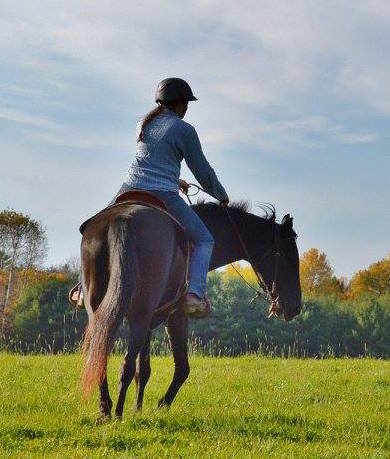
This article resonates with my experiences with horses and it is well reasoned. The difference I see is that back in the day we learned more by experiencing what didn’t work and changing our approaches than doing things right the first time through understanding well-explained science. We would figure out what was happening but only had an intuitive sense as to why it was happening.
In dealing with literally hundreds of wild horses in the old “Wild Horse Workshops” we (a) learned for everyone’s safety we all had to be keen, passive observers of equine body language and (b) approach the process of desensitizing and starting these horses on a successful track from the standpoint of creating learning games or puzzles. When we happen to be smart enough to figure out how to turn a training session with a green or anxious horse into a game or interesting challenge for the horse to solve, these animals have shown to possess incredible learning capacities.
There is another old adage that when we go out to get our horse we need to figure out what side of the corral he woke up on. I’d say what is really happening is that the horse is figuring out if WE got up on the wrong side of the bed. Or perhaps looking at it more scientifically, what energy and intentions from us are the horse reading?
Common illustrations include the horse that just doesn’t want to load in the trailer on show day. (Does anyone really believe that the horse keeps a calendar in his/her stall?) Or how about the kid who doesn’t follow directions and climbs aboard that anxious horse that we adults have to constantly try to keep under control, but they’re both galloping about having a ball. My point in support of this article is that clearly a horse’s response model, illustrated here by “The High Road” vs. “The Low Road,” is that we need to realize how incredibly good these animals are in reading our body language and intentions. If they are not completely confident in what’s going on, how we either respond or react (there is a difference) and our levels of calmness or anxiety can significantly influence what happens next.
The article referenced an anxious mustang. We develop and use mustangs for all kinds of jobs including range rescue work. They can be incredibly quick and even enthusiastic learners under proper conditions. I’ll argue that it’s in their DNA and we haven’t dulled those abilities since they grew up having to learn to survive and fit into social structures. Using one particular horse as an example to support Dr. Peters’ and Amy Skinner’s arguments, a friend brought over a big mustang that she had sold but had taken back because he repeatedly bucked off his rider. I looked this horse over and the vibe I got was that he was a freaking gift from God. After a couple of minutes of letting him check me out, I literally climbed on him with nothing but a halter and lead and stood on his back as he stood, not rigid, but quietly. Now I’m at the age that the government forces me to carry a Medicare card so I wouldn’t normally pull such a stunt (at least if my wife was watching) but this was a really good horse. A few days later I loaned out my primary horse for someone to use in the Nevada Day Parade so I took “Samson,” and this horse was so solid I videoed the parade from horseback with the reins hanging over the saddle horn. Samson is now in Colorado and packs a tot that he absolutely loves on trail rides.
My point in all of this is this. Good horse or bad horse, they’re basically wired the same, which is why good horses can be turned into bad horses and vice versa. Most of the time it’s not the horse, but the human that’s the problem and often it’s a whole lot harder to teach humans than it is to teach horses.
Thanks for posting the article. It caused me to take a trip down memory lane and provide some scientific context to what we’ve previously had to learn through trial and error and observation. The lessons contained in this piece are well worth noting.
Great article, Amy, on the dangers of trying a “fast-fix” which is usually no fix at all. It’s unfair to the horse, the owner, and the trainer. You made some wonderful points on finding the right fit between rider/owner and the horse. If they don’t have the money or time to work on a long-term training plan, then selecting another horse that would be better suited right now for them would be the best bet. Too many folks want to treat their horse’s education like taking their car to the shop. Take the car in, have someone work on a problem for a set amount of money and time, and get the car back expecting it to be running perfectly. This scenario sets the horse up for failure, in which he is worse off in the end, no matter how kind and knowledgeable the trainer is.
Thank you for this article. I really enjoyed it.
I have 5 horses. All are 10 or so except my palomino filly “Lily” who just turned 3. She came to me at one year of age and, aside from the long ride from Tennessee to CA, she has had no questionable experiences. She lived in a herd there and she lives in a herd here and I am so much enjoying the slow process of watching her grow up and interact with her horse and human friends. I put the saddle on her when she was 2 and took it off and she has been ponied around the neighborhood. I put the saddle back on last week and she’ll be turning 3 on may 1 which is when I’m going to sit on her. My plan is to lightly ride her until she’s 4. She is amazing in comparison to all the other horses who came with a training history which has been hard to figure out and rework. They’re all great but it is interesting to have a horse with a blank slate and take your time.
I train raptors and small wild mammals for educational programs and it’s the same with them–but they are less forgiving than horses so you really have to do your best to make as few mistakes as possible and spend the time it takes.
I really enjoy reading your articles. Thank you for writing them and for all you do for horses and people.
All great points Amy. We can go back to Xenophen (430-354 BC) and Antoine De Pluvinel (~1550) to see that even that long ago, the true horsemen knew that there was no artificial man-made timeline for training horses. They, like the modern day true horsemen (Tom, Bill, Ray and others), knew from experience that learning for horses is a lifelong experience, and whether we take the time to be sure they are learning to like learning or not, they are always learning. They don’t differentiate between ‘good’ or ‘bad’ learning (most people don’t either, for that matter). What I find baffling is that with all this information out there, and so readily accessible, why do people still try go the instant-grat, quick fix route, to the great expense of not only the horses involved, but themselves? Choosing the best route for the horse is always the best route for the person, too. So simple.
Thanks for the article. Now if there was a way to communicate this so it would become the common practice.